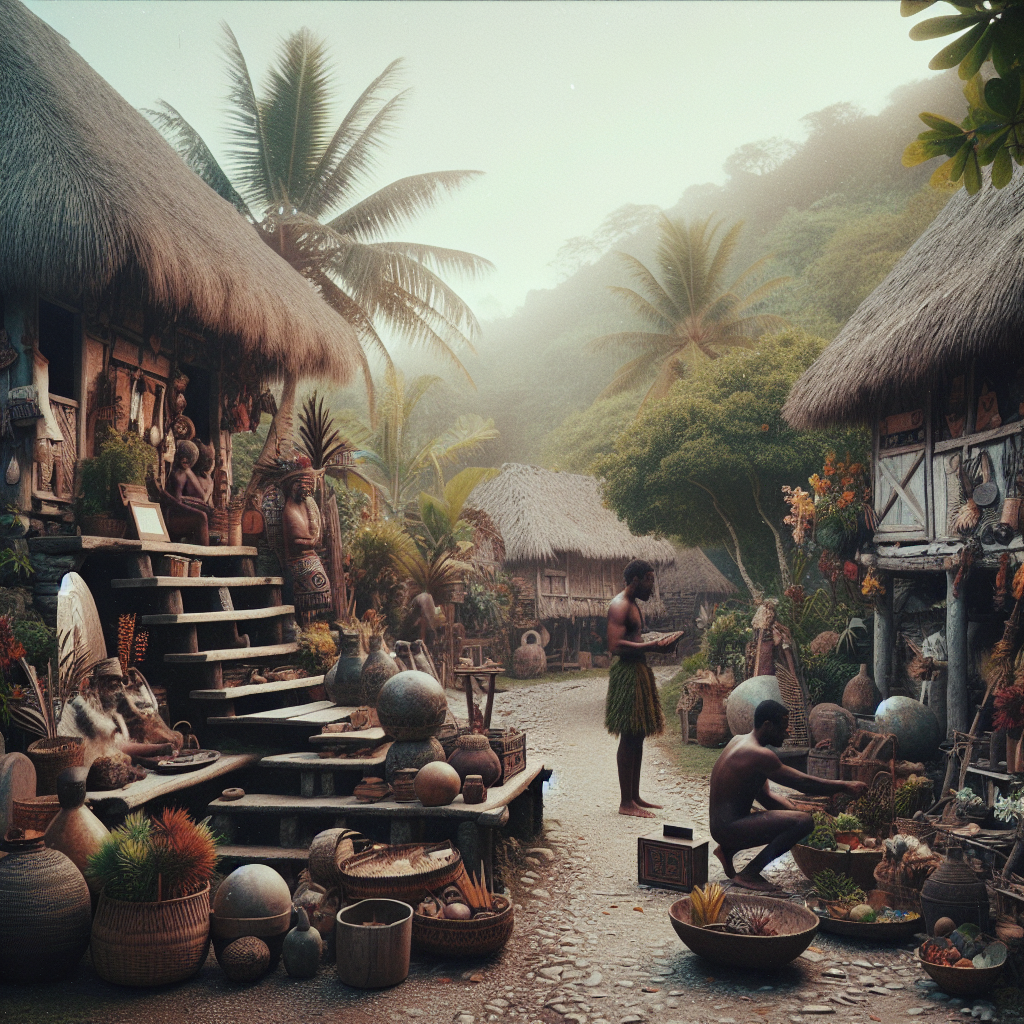Introduction to Fiji Cultural Heritage Sites
In my experience with Fiji cultural heritage sites, I’ve been captivated by the rich tapestry of traditions, stories, and history that these sites embody. When I first started researching Fiji, I quickly learned that the Fiji cultural heritage sites are not just beautiful locations—they are living symbols of the Fijian identity and ancestral legacy. I want to share what I’ve discovered about these remarkable places, as I believe they offer an authentic glimpse into Fiji’s soul.
From what I’ve learned, exploring the Fiji cultural heritage sites allows us to connect deeply with Fijian customs, spirituality, and community life. These sites hold stories of ancient chiefs, spiritual ceremonies, and traditional crafts that have been passed down through generations. In my experience, visiting these sites is a transformative journey, revealing the profound cultural roots that continue to shape modern Fiji. I recommend everyone interested in Fijian culture to delve into the Fiji cultural heritage sites—they are truly treasures waiting to be uncovered.
Exploring Iconic Fiji Cultural Heritage Sites
Ancient Fijian Temples and Sacred Grounds
One of the first Fiji cultural heritage sites I visited was the historic temples that dot the islands. These sites, often called ‘mama’ or ‘bure’, are sacred spaces where traditional ceremonies still take place. I’ve discovered that many of these temples are centuries old, built with coral stones and adorned with carvings that tell stories of ancestors. From my research, I found that these temples serve as spiritual hubs for local communities, connecting them to their past and divine beliefs.
I recommend taking time to explore these sacred grounds, as they offer an intimate view of Fijian spirituality. During my visits, I’ve experienced the serenity and reverence that permeate these sites. I believe that understanding these spiritual places deepens our appreciation for Fiji’s cultural heritage and its ongoing traditions. The Fiji cultural heritage sites like these are vital for preserving the island’s spiritual identity and communal values.
Traditional Fijian Villages and Their Cultural Significance
In my experience, visiting traditional Fijian villages provides a unique window into the living culture behind the Fiji cultural heritage sites. I’ve had the privilege of witnessing ceremonies, kava rituals, and handicraft demonstrations that have been preserved for generations. These villages are often considered open-air museums, where every hut, dance, and song reflects deep respect for ancestors and nature.
From what I’ve learned, these villages are more than tourist attractions—they are the heart of Fijian life and tradition. I recommend engaging with local hosts, as their stories enrich the experience and offer authentic insights into the significance of these sites. I personally found that these visits helped me understand the importance of communal ties and customary practices in maintaining Fiji’s cultural integrity. The Fiji cultural heritage sites within these villages are living testaments to resilience and cultural pride.
Historic Sites and UNESCO Recognition
Among the notable Fiji cultural heritage sites, some have earned UNESCO World Heritage status, highlighting their global importance. I’ve discovered that sites like the Sigatoka Sand Dunes and the ancient Fijian forts are not only archaeological treasures but also symbols of Fijian resilience. Visiting these sites, I’ve been struck by the blend of natural beauty and historical significance.
From my research, I believe that protecting these UNESCO sites is crucial for future generations. I recommend that visitors approach these locations with respect and curiosity, as they tell stories of survival, adaptation, and cultural continuity. The Fiji cultural heritage sites recognized by UNESCO serve as powerful reminders of Fiji’s place in world history and its unique cultural identity.
Hidden Gems Among Fiji Cultural Heritage Sites
Undiscovered Sacred Sites and Local Legends
While many travelers flock to well-known locations, I’ve found that some of the most meaningful Fiji cultural heritage sites are hidden away, tucked into remote corners of the islands. I’ve discovered secret caves, ancient platforms, and sacred groves that are steeped in local legends. These hidden sites often lack the crowds and commercialization, allowing for a more intimate experience.
From what I’ve learned, exploring these lesser-known sites requires a local guide or insider knowledge, but I believe that’s part of the adventure. I recommend seeking out these hidden treasures to truly connect with the authentic spirit of Fiji’s traditions. I’ve experienced moments of awe standing in places where history and legend converge, reinforcing the idea that the Fiji cultural heritage sites are not just monuments but active parts of living storytelling.
Natural Landmarks with Cultural Significance
Some of Fiji’s most stunning natural landmarks are also vital Fiji cultural heritage sites. I’ve found that mountains, waterfalls, and coral reefs often have spiritual importance, linked to creation stories and ancestral worship. For instance, I’ve hiked to mountain peaks where local legends say spirits dwell, feeling a deep sense of connection to the land and its history.
From my experience, these natural sites are integral to understanding Fiji’s cultural landscape. I recommend exploring these destinations with respect and mindfulness, recognizing their sacred role in Fijian life. The Fiji cultural heritage sites that blend natural beauty with cultural meaning demonstrate how intertwined nature and tradition are in Fiji’s identity.
Preserving the Legacy of Fiji Cultural Heritage Sites
I believe that preservation efforts are essential to maintain the integrity of these Fiji cultural heritage sites. From what I’ve learned, many sites face threats from climate change, development, and neglect. I recommend supporting initiatives that promote sustainable tourism and local stewardship to ensure these treasures endure.
In my experience, engaging with local communities and respecting their customs is key to responsible tourism. It’s crucial to recognize that these sites are more than historical artifacts—they are living symbols of Fiji’s identity. I believe that safeguarding the Fiji cultural heritage sites is a collective responsibility that benefits us all, preserving Fiji’s legacy for generations to come.
Resources and Further Reading
Authoritative Sources on Fiji Cultural Heritage Sites
Throughout my research on Fiji cultural heritage sites, I’ve found these resources incredibly valuable. I recommend checking them out for additional insights:
Authoritative Sources on Fiji cultural heritage sites
-
Fiji Government Cultural Resources
fiji.gov.fjThis official site offers detailed information on protected sites, cultural policies, and heritage preservation efforts in Fiji.
-
UNESCO World Heritage Centre
unesdoc.unesco.orgThis resource provides official documentation on UNESCO-designated sites, including those in Fiji, with historical and cultural significance.
-
Fiji News & Cultural Updates
fijilive.comOffers current news and stories related to Fiji’s cultural heritage efforts, festivals, and community initiatives.
-
Fijian Heritage Foundation
fijianheritage.orgDedicated to preserving and promoting Fiji’s intangible and tangible cultural heritage, including sites and traditions.
-
World Heritage & Cultural Sites
world-heritage.orgProvides global context on heritage sites, including detailed reports on Fiji’s UNESCO listings and preservation challenges.
-
Fiji Tourism & Cultural Tours
fijitourism.comOffers curated cultural tours that highlight Fiji cultural heritage sites and immersive experiences.
-
Academic Journals on Pacific Heritage
researchgate.netProvides scholarly articles and research papers on Fiji’s history, archaeology, and cultural preservation efforts.
Frequently Asked Questions
What are the most famous Fiji cultural heritage sites?
In my experience, the most famous Fiji cultural heritage sites include the Sigatoka Sand Dunes, the ancient Fijian forts like Naqaqa, and the sacred sites of Vatulele Island. These locations are renowned for their archaeological significance and cultural stories, making them must-visit places for anyone interested in Fiji’s history.
How can I best experience Fiji’s cultural heritage sites responsibly?
From my research and personal visits, I recommend engaging with local guides who can share authentic stories and ensure respectful interactions. It’s essential to follow local customs, avoid damaging fragile sites, and support community-led initiatives. I believe responsible tourism helps preserve these Fiji cultural heritage sites for future generations.
What makes Fiji cultural heritage sites unique compared to other Pacific islands?
In my experience, Fiji’s heritage sites stand out due to their blend of natural beauty, ancient traditions, and ongoing community practices. Sites like traditional vaka (canoe) yards and ceremonial grounds are active parts of daily life, which I find truly special. I believe this living connection makes Fiji’s Fiji cultural heritage sites uniquely vibrant and meaningful.
How can I support the preservation of Fiji cultural heritage sites?
Supporting local conservation projects, respectful tourism, and educational initiatives are my top recommendations. I’ve found that raising awareness and contributing to community-led efforts can make a real difference. I believe that by valuing and protecting these Fiji cultural heritage sites, we help ensure their stories and significance endure for generations.
Conclusion
In conclusion, my research on Fiji cultural heritage sites has shown me how deeply intertwined they are with the identity, spirituality, and history of Fiji. These sites are not merely remnants of the past but are vibrant, living symbols of resilience and tradition. I hope this guide helps you appreciate the importance of preserving and exploring Fiji’s cultural treasures. Based on my experience, visiting these Fiji cultural heritage sites offers an unforgettable journey into the heart of the Fijian people and their enduring legacy.
Find out more information about “Fiji cultural heritage sites”
Search for more resources and information:








Comments are closed